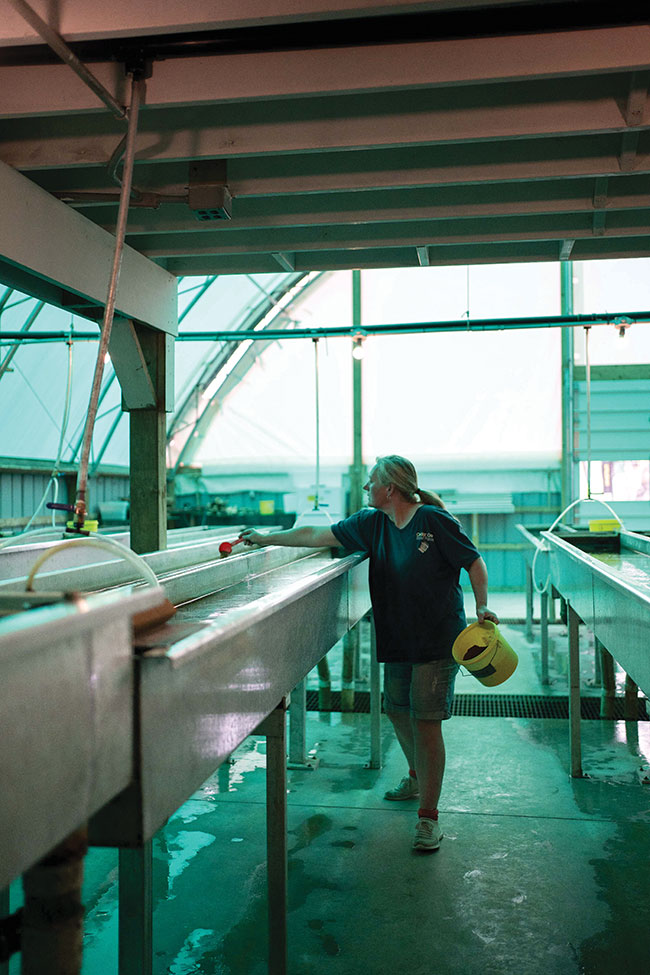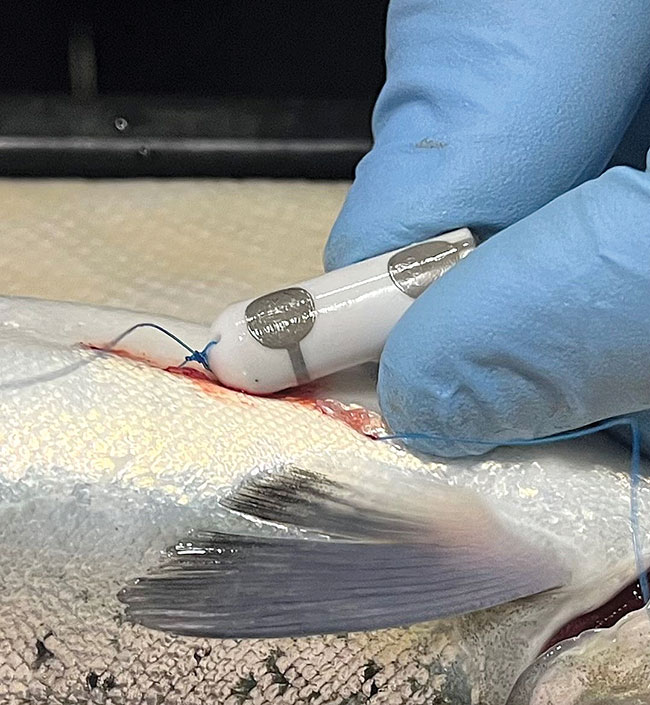| |
| |
 |
 |
| |
 |
|
@{mv_date_MMM d, yyyy}@ |
| |
|
| |
It's interesting to see sea urchin being promoted as a viable part of the aquaculture industry. There are many ongoing projects on urchin farming. We'll report on more as we have them.
- Seyitan Moritiwon, Associate editor
|
|
| |
|
| |
An American marine eco-physiologist and associate professor of aquaculture and fisheries at the University of Rhode Island (URI) says that raising sea urchins is part of a viable industry. Coleen Suckling said there are many projects on urchin farming taking place both on and off the URI campus, including optimizing hatchery production.
» Read More...
The North Carolina Wildlife Resources Commission (NCWRC) is developing a plan for this year’s Public Mountain Trout Waters (PMTW) stocking program to include modifications to the Armstrong State Fish Hatchery.
» Read More...
Danish hose pump company, LSM Pumps, has introduced its latest innovation, the LSM125 Linear Pump, for the gentle and efficient transport of live fish in the aquaculture and fishing industries.
» Read More...
|
| |
|
| |
 Aquaculture successfully produced 94.4 million tonnes of aquatic animals in 2022, surpassing capture fisheries by 3.4 tonnes. For the first time, 51 per cent of the aquatic animals obtained were cultured rather than fished for. The success of aquaculture activities so far has been driven by years and years of efforts. The increase in production is a fruit of increasing culture areas, intensifying culture conditions
» Read More...
Aquaculture successfully produced 94.4 million tonnes of aquatic animals in 2022, surpassing capture fisheries by 3.4 tonnes. For the first time, 51 per cent of the aquatic animals obtained were cultured rather than fished for. The success of aquaculture activities so far has been driven by years and years of efforts. The increase in production is a fruit of increasing culture areas, intensifying culture conditions
» Read More... |
| |
 Recirculating aquaculture systems (RAS) are designed to maintain water quality that matches the biological requirements of fish. However, when RAS are operated with limited water exchange, harmful compounds can accumulate in the water. Over the last 15 years, the Freshwater Institute (FI) has characterized RAS water quality under different operating conditions
» Read More...
Recirculating aquaculture systems (RAS) are designed to maintain water quality that matches the biological requirements of fish. However, when RAS are operated with limited water exchange, harmful compounds can accumulate in the water. Over the last 15 years, the Freshwater Institute (FI) has characterized RAS water quality under different operating conditions
» Read More... |
| |
| |
|
| |
A Nofima project on testing algae levels in feed and its effect on fish has shown positive results. The algae-based product tested (AlgaPrime DHA LS) was rich in the marine omega-3 fatty acid DHA and was supplied by Corbion.
» Read More
Research by the University of New Hampshire’s College of Life Sciences and Agriculture (COLSA) has shown that underwater receivers that receive acoustic signals from transmitters on fish and invertebrates can track the species’ long-distance movements.
» Read More
|
| |
|
| |
» Read More...
|
|
» Read More...
|
|
» Read More...
|
|
» Read More...
|
|
» Read More...
|
|
| |
|
| |
|
|
| |
| |




